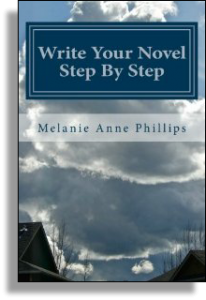Filling the Holes
In Step 6, you found holes and inconsistencies in your story as it stands so far by looking at it as an audience would, rather than as an author and asking questions about what was missing or didn’t make sense.
In this step you’ll file those holes and fix the inconsistencies by answering these questions to make your story more complete and to tune it up so it rings true.
Recalling the “Creativity Two-Step” method you employed in Step 4, you can see that the questions you’ve just asked about your synopsis are the first part of that technique. Just as before, your task in this step is to come up with as many potential answers for each question as you can (within reason).
And speaking of reason, just a reminder that the “two-step” method works because it alternates between logic and passion; between the analytical mind and the creative mind.
Asking questions about your synopsis is an analytical endeavor: you are trying to make sense of the story and noting everything that doesn’t.
Coming up with a grab bag of answers for each is a creative endeavor: you are turning your Muse loose to invent new concepts with no restrictions at all.
It is important to keep in mind that any answer is a good one, even if it is patently ridiculous. No matter: the most nonsensical idea, though it may never be used itself, can spur the inspiration of just the idea you need, which never would have occurred to you if you hobble your Muse in advance and force it to work within constraints of any kind.
The Muse hates limits, and cannot be directed any more than one can herd cats. Asking the questions is a focused and critical process, but answering them should always be completely free-form in order to achieve the best results.
So, refer to the questions about your story synopsis you just asked in the last step and see how many interesting answers you can bring forth. The more unusual the answer, the more likely your story will avoid following a cliché path and will stand out as original and intriguing.
Example:
Answers to Questions About Snow Sharks
From the synopsis:
A transport plane carrying them [the snow sharks] crashes in a storm high in the Rocky Mountains, just above a high-priced ski resort for the rich.
Questions:
- What kind of plane?
- Constellation
- B-2 Bomber
- Modified 747
- B-17
- Blimp
- Dirigible
- Bi-Plane
- Glider
- Rebuilt flying saucer from Area 51
- How many sharks was it carrying?
- 1
- 17
- 300
- A mating pair
- Do they all survive?
- Only one survives
- 6 survive
- They all survive
- Just the mating pair
- An even dozen
- Where was the transport taking the sharks?
- Hawaii (for disposal)
- An arctic research station
- A secret base in Colorado
- Russia (they were being stolen)
- To NASA for a mapping expedition on one of Jupiter’s moons.
You may have noticed that a few of the answers actually provide more information than was asked in the questions, for example:
Question 4 – Where was the transport taking the sharks?
Answer d. – Russia (they were being stolen)
When I answered “Russia” arbitrarily, I thought of the Russian Mob, and it occurred to me that organized crime might be trying to hijack and resell these biologic weapons.
If additional material comes to mind when answering a question, don’t be afraid to include it just because it goes beyond the expected answer. It’s all part of the creative process, and it never pays to squelch a good idea.
The more questions you answer, the fewer holes and inconsistencies in your story, and the more answers you come up with, the less cliché your story is likely to be.
Conversely, don’t feel pressured to answer everything and never – absolutely NEVER – do more work that you find interesting and pleasurable. The best way to kill a story is to kill your interest in writing it.
Though producing more answers enriches your story, it may also deplete your drive to get your novel completed if the process becomes work and ceases to be fun.
So, let your Muse loose, without restrictions or quotas, and whatever shakes out will both add to your story and add to your motivation to tell it.
Now – spice up your story by peppering it with new material! Then, in Step 8, we’ll put it all together and integrate your original concepts and best new ideas into a revised synopsis.
 This article is based on our StoryWeaver Step-by-Step Story Development Software that guides you through more than 200 interactive Story Cards from concept to completion of your novel or screenplay. Just $29.95 for Windows or Macintosh.
This article is based on our StoryWeaver Step-by-Step Story Development Software that guides you through more than 200 interactive Story Cards from concept to completion of your novel or screenplay. Just $29.95 for Windows or Macintosh.



You must be logged in to post a comment.